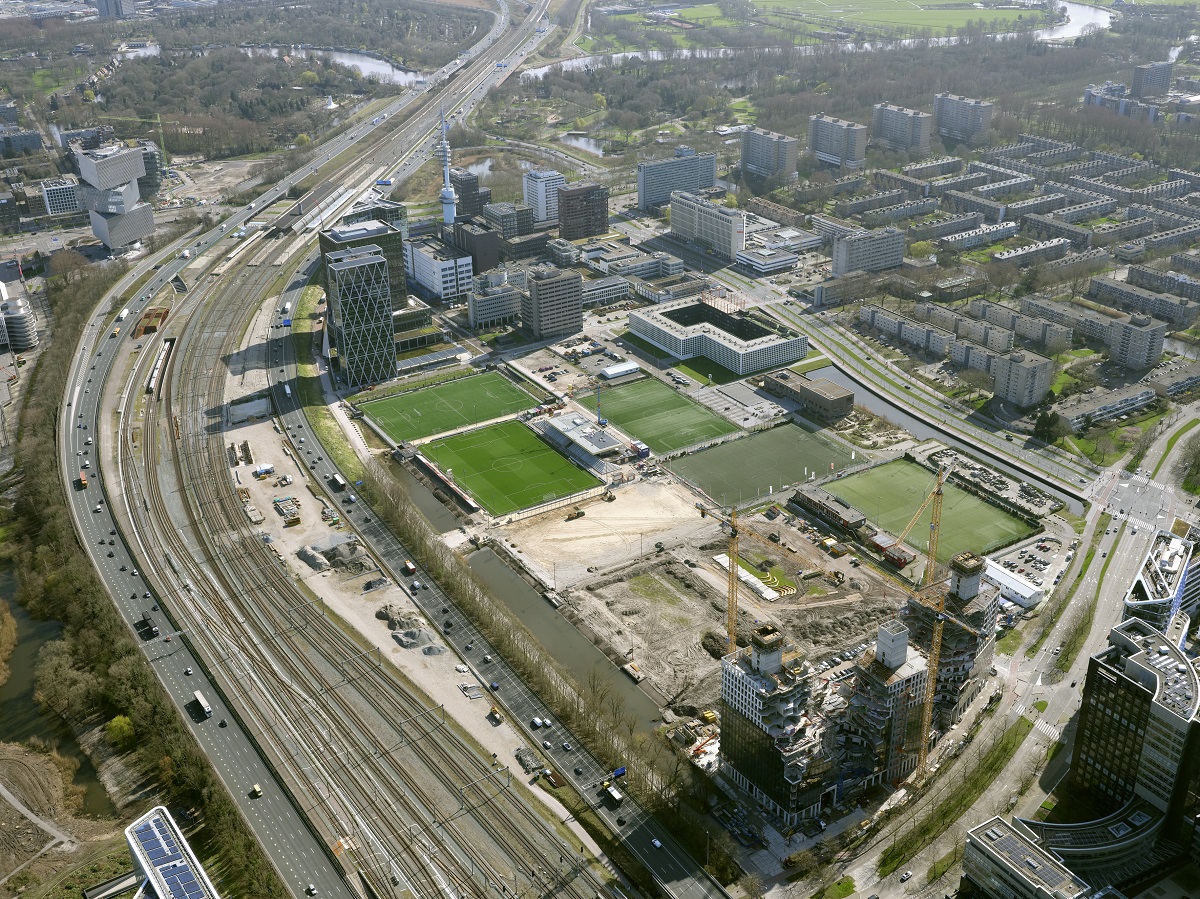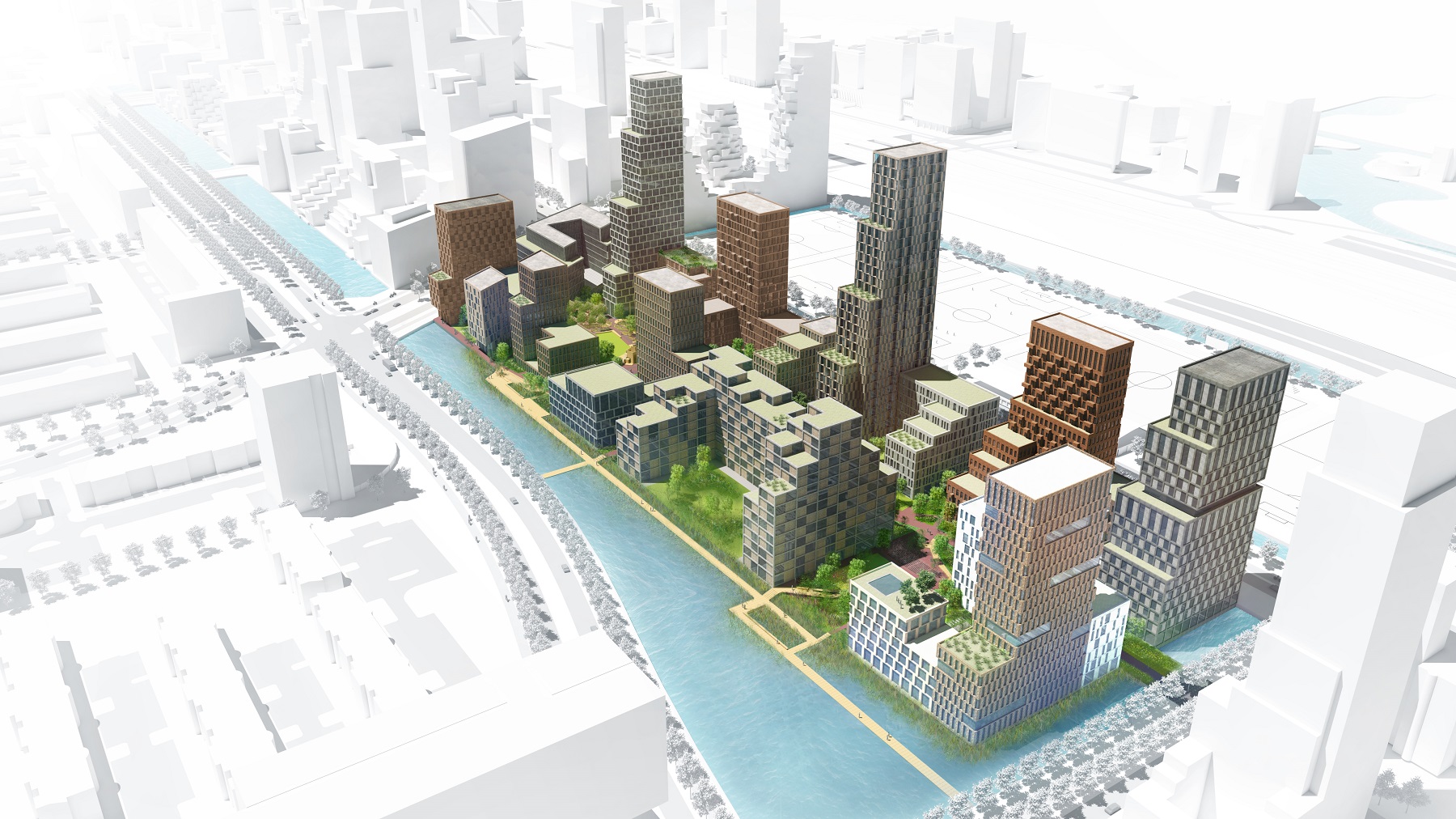Monique Soe-Agnie led a team of local government specialists who took care of all the preparations for the new residential district: designers, spatial planners, lawyers, urban designers, ecologists – all contributing to the process required to realise 1,350 homes in Zuidas. And that process is still continuing, despite the fact that Soe-Agnie has now started work in Arena Poort in Amsterdam Zuidoost. ‘The City Executive has now approved the development plan for the Ravel neighbourhood. This decision gives the go-ahead for the project’s realisation, which is fantastic, of course. But, we’re not there yet. My colleagues are now working on a zoning plan.’

First phase
The new residential neighbourhood will be developed in phases. If all goes well, the first phase will start at the end of 2022, with two residential buildings and the definitive accommodation for the Zuidas Children’s Campus integrated childcare centre. Talks are already underway, including with the housing associations about the residential construction and with the people from the Zuidas Children’s Campus. There will also be a building block intended for mixed use, with offices, housing and facilities. Market players will be able to bid for the work in a public tendering process. ‘My colleagues will also be working on that’, says Soe-Agnie. ‘What’s more, this is just the first phase. The aim is to have the fourth and final phases completed by 2035.’
Long prelude
‘We’ve already been making plans for Ravel for some years now’, says Soe-Agnie. ‘Building a residential neighbourhood is quite a complex process. Plus, there’s a lot of preparation and decision-making even before that stage.’ This also applies to the plans for this residential district, which have progressed from the Ravel project decision made in 2007 to a Ravel implementation decision in 2009 through to the Revised Implementation Decision for Ravel, Zuidas (Zuidas Ravel Herzien Uitvoeringsbesluit, Dutch pdf) of 2015. This long prelude was all because of the Zuidasdok project, which had originally involved moving both the A10 Zuid and the railway and metro tracks completely underground. The first plan for the Ravel neighbourhood assumed that that was going to happen. But the economic crisis put paid to that. The plan for Zuidasdok was made less ambitious: much of the road and the whole of the track stayed above the ground. This called for some major changes to the plans laid down in the 2009 Ravel implementation decision.

Three developments
In 2015, Amsterdam City Council approved these changes to the plans for Ravel. The revised Implementation Decision for Ravel comprised three developments: the construction of Valley, the refurbishment of the ‘Goed Genoeg’ sports complex, the home base of AFC football club and the realisation of the new Ravel residential neighbourhood. ‘The construction of Valley is now well underway, and the refurbishment of the sports complex and new AFC clubhouse will soon have been completed’, says Soe-Agnie. ‘Now all the focus is on the new residential neighbourhood. It’s fantastic that, after spending so long on preparations, we’re now moving towards realisation.’
In search of inspiration
How do you come up with ideas for a new residential neighbourhood? ‘In my view, the great thing is that so many processes happen simultaneously’, says Soe-Agnie. ‘As well as preparing for the political decision-making and determining the legal, technical and spatial planning frameworks, there is also a creative process going on. For the Ravel residential neighbourhood, this included taking trips to numerous places in the city in search of inspiration. That generated an enormous amount of energy, creativity and ambition. Our designers and urban planners then developed various scenarios, which ultimately resulted in the current urban design plan for the new Ravel residential neighbourhood. Of course, the plan also needed to be gone through in detail and assessed for financial and technical feasibility, in order to improve it further. That’s how this wonderful Ravel Development Plan ultimately came about: a park-like, low-traffic neighbourhood, ideal for people with children, where the focus is on spending time, meeting each other, playing and exercising. I found it a privilege to be able to provide leadership to this whole process. And I simply can’t wait until the first part of the Ravel neighbourhood is completed.’

Give your opinion